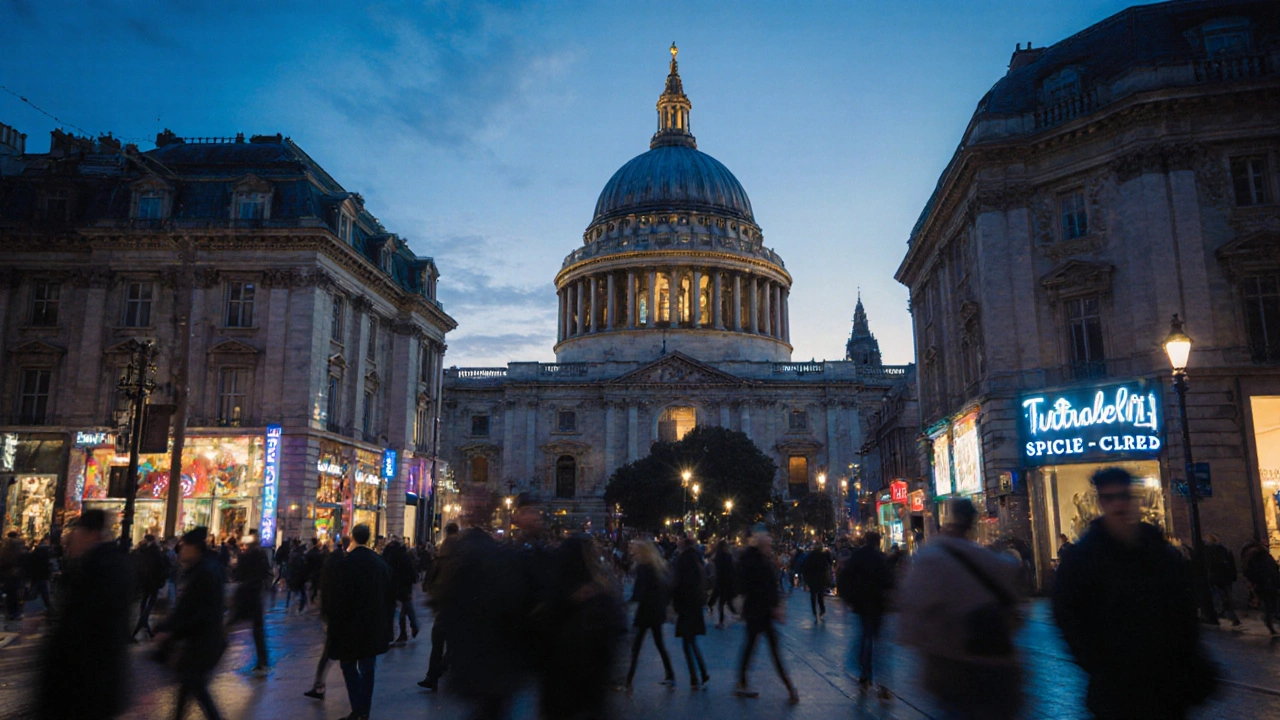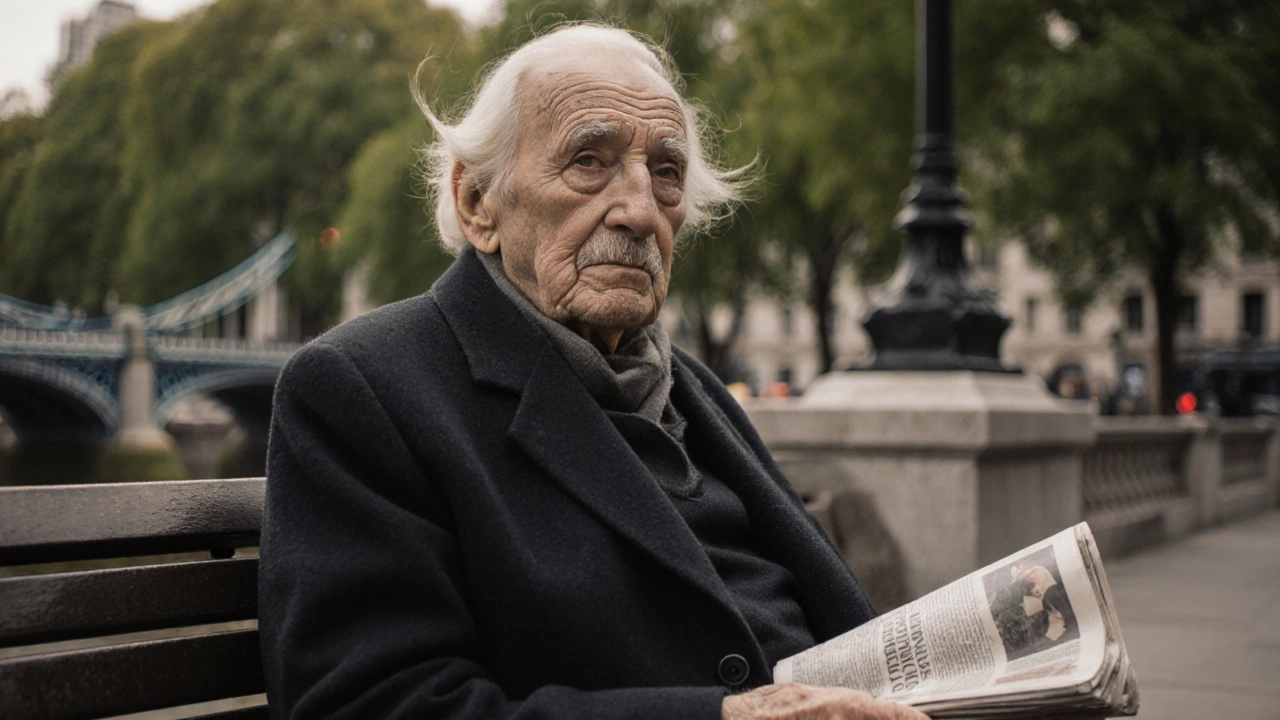
London doesn’t wait for you to get the perfect shot. The light changes in minutes. Crowds move fast. Historic buildings cast long shadows at 4 p.m., and rain turns the streets into mirrors. If you’re shooting here, your lens isn’t just gear-it’s your second eye. Choosing the right one makes the difference between a snapshot and something that captures the soul of the city.
Street Photography: The 35mm Rule
London’s streets are alive-hawkers in Camden, commuters in King’s Cross, jazz musicians under the arches of Waterloo. You need a lens that lets you get close without being noticed. The 35mm lens is the quiet hero here.
It’s wide enough to catch the full scene: a busker’s feet, a passing cyclist, the reflection of Tower Bridge in a puddle. But not so wide that it distorts faces or pulls in too much clutter. A 35mm f/1.8 or f/1.4 gives you enough speed to shoot in dim alleyways without cranking up the ISO. I’ve seen photographers with 24mm lenses struggle-too much background noise. Others with 50mm miss the context. The 35mm hits the sweet spot.
Try shooting near Spitalfields Market at golden hour. The narrow alleys, the mix of old brick and modern graffiti, the way light hits the café awnings-it all comes together in 35mm. You don’t need to zoom. You move. You step left. You crouch. You wait. That’s street photography.
Architecture: The 24mm Wide-Angle Advantage
London’s skyline is a layered story: Gothic spires, Victorian terraces, glass towers like the Shard. To capture these properly, you need to fit more in without tilting your camera up and warping the lines. Enter the 24mm lens.
A 24mm f/2.8 or f/1.4 lets you stand back from St. Paul’s Cathedral and still get the whole dome, the steps, the crowd below. It’s the lens I used to photograph the Gherkin from Fenchurch Street-no post-processing distortion needed. You get clean, straight lines, even when you’re shooting from ground level.
Don’t underestimate the power of a wide-angle at night. Piccadilly Circus at 10 p.m. is a blur of neon and motion. With a 24mm and a tripod, you can capture the glow of the billboards without losing the architecture behind them. Wide-angle lenses also work great for interior shots-think the dome of the British Library or the vaulted ceilings of the Victoria and Albert Museum.
Some photographers swear by tilt-shift lenses for architecture. They’re expensive and overkill for most. A good 24mm with careful composition and a level tripod does the job. Save the tilt-shift for commercial work.
Portraits: The 85mm Sweet Spot
London portraits aren’t just about faces. They’re about people in context: a pensioner reading the paper in Hyde Park, a street artist with paint-splattered hands, a child laughing under the London Eye. You need a lens that isolates the subject without feeling staged.
The 85mm lens is the classic portrait choice for a reason. It compresses the background just enough to blur out the chaos of Oxford Street or the crowds at Borough Market, while keeping the subject sharp and intimate. At f/1.4 or f/1.8, you get creamy bokeh that makes skin tones glow.
I shot a series of elderly Londoners near Tower Bridge using an 85mm f/1.4. The background melted into soft greens and greys, but every wrinkle, every glint in their eyes stayed clear. The lens doesn’t force you to stand too close-you can keep a respectful distance, which matters when you’re photographing strangers.
Don’t think you need a 135mm for portraits. It’s too tight for most urban settings. You’ll be backing up into traffic or missing the environment that gives the photo meaning. The 85mm gives you room to breathe, both for you and your subject.

What About Zoom Lenses?
You might be tempted by a 24-70mm or 24-105mm zoom. They’re convenient. You don’t have to swap lenses on a rainy day in Soho. But convenience comes at a cost.
Most zooms max out at f/2.8 or f/4. That means slower shutter speeds in low light. You’ll be shooting at ISO 3200 instead of 800. Noise creeps in. Detail fades. A fixed 35mm f/1.8 is sharper, lighter, and cheaper than a zoom that does the same focal length.
That said, if you’re shooting all day and don’t want to carry three lenses, a 24-70mm f/2.8 is a decent compromise. Just know you’re trading optical quality for flexibility. For serious London work, I still recommend primes. They force you to think, to move, to be deliberate.
Real-World Setup: What I Carry
Here’s what I pack for a full day of London photography:
- 35mm f/1.8 - for street scenes, markets, candid moments
- 24mm f/2.8 - for buildings, interiors, wide cityscapes
- 85mm f/1.8 - for portraits, quiet corners, emotional shots
- A small, lightweight bag - no one wants to haul a heavy kit through the Tube
- A collapsible reflector - for backlit subjects in parks
I leave my telephoto at home. You won’t need it. London isn’t a wildlife reserve. You’re not photographing lions from a jeep. You’re walking, observing, connecting. The best shots come from being there, not from zooming in from a distance.

When to Skip the Lens Swap
Some days, you just want to walk and shoot. Rain’s coming. You’re tired. You don’t feel like switching lenses in the middle of Covent Garden.
That’s when the 35mm becomes your all-in-one. It’s wide enough for architecture if you shoot low and angle up. It’s tight enough for portraits if you get close. It’s fast enough for dim pubs and evening markets. If you had to pick just one lens for London, make it the 35mm.
It’s not the most glamorous choice. But it’s the most reliable. I’ve used mine in snow, in downpours, in the middle of a protest march. It never failed me.
Common Mistakes to Avoid
- Using a 50mm for street photography in narrow alleys-you’ll miss half the scene.
- Trying to shoot architecture with a 50mm-you’ll have to step back too far, and lose the scale.
- Shooting portraits with a 24mm up close-it distorts noses and makes people look unnatural.
- Ignoring the light. London’s weather changes fast. Shoot early morning or late afternoon. Avoid midday harshness.
- Forgetting to clean your lens. London’s air carries dust, soot, and salt. Wipe it before you shoot.
Final Thought: It’s Not About the Gear
The best lens for London isn’t the one with the most megapixels or the fanciest name. It’s the one you’re willing to carry. The one you don’t leave behind because it’s heavy. The one you reach for without thinking.
London rewards patience. It rewards presence. A good lens helps you see what’s there. But it’s your eyes, your timing, your respect for the city that turn a photo into something unforgettable.
Go out. Walk. Look. Shoot.
What’s the best lens for street photography in London?
The 35mm lens is the most practical choice for street photography in London. It offers a wide enough field of view to capture context-like alleyways, markets, and passing crowds-while still letting you get close enough to capture emotion. It’s fast (f/1.8 or f/1.4), compact, and performs well in low light. Avoid 50mm for tight spaces and 24mm for too much distortion.
Can I use a zoom lens for London photography?
Yes, but with trade-offs. A 24-70mm f/2.8 can work if you’re shooting all day and don’t want to change lenses. But it’s heavier and slower than prime lenses. You’ll get less sharpness, more noise in low light, and less background separation. For serious results, primes are better. Use a zoom only if convenience outweighs quality for your shoot.
Is a 50mm lens good for London portraits?
It’s okay, but not ideal. A 50mm works in open spaces like Hyde Park, but in crowded areas like Camden or Notting Hill, you’ll need to stand too far back to avoid distortion. The 85mm is better-it gives you natural perspective, smoother background blur, and lets you shoot from a respectful distance. Save the 50mm for casual shots or if you’re on a tight budget.
Do I need a tripod for architecture shots in London?
Not always, but it helps a lot. For daytime shots with a 24mm lens, you can handhold at 1/60s or faster. But for night shots-like the illuminated Tower Bridge or the lights of the Thames-you’ll need a tripod to avoid motion blur. A lightweight, collapsible tripod fits easily in a bag and makes a big difference in image quality.
What time of day is best for photography in London?
Golden hour-just after sunrise and just before sunset-is ideal. The light is soft, warm, and long, making buildings glow and streets shimmer. Blue hour (after sunset) is perfect for architecture with city lights. Avoid midday when the sun is overhead-it flattens textures and creates harsh shadows. Rainy days can also be golden: wet pavement reflects lights beautifully.